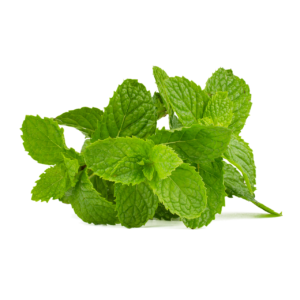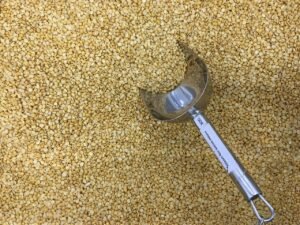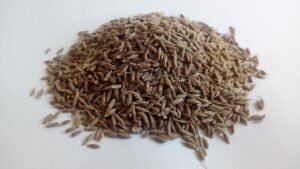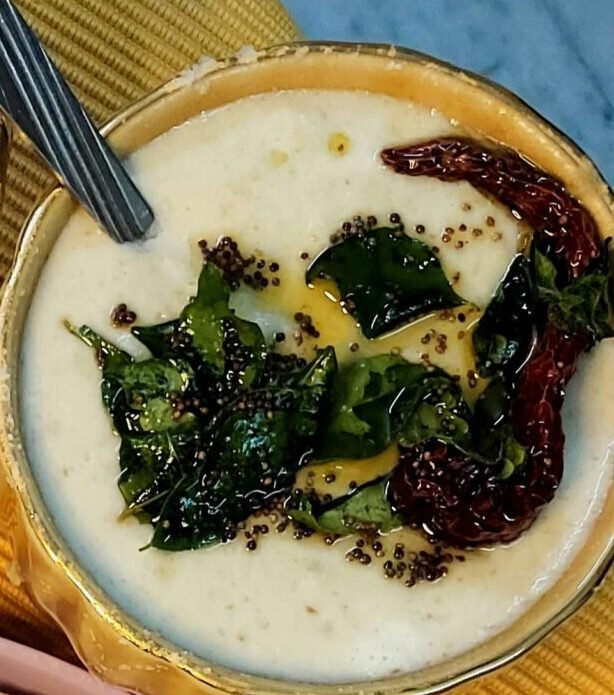Coconut Chatney
Coconut Chutney
Coconut chutney is a delightful condiment originating from South India. It’s a flavorful and versatile accompaniment that complements many dishes, especially those in South Indian cuisine.There are two main types of coconut chutney: a South Indian-style chutney made with fresh or frozen coconut, and a drier chutney made with desiccated coconut. This recipe focuses on the South Indian style chutney.
The beauty of coconut chutney lies in its simplicity and versatility. You can enjoy it as a dip for your favorite South Indian dishes, or even use it as a flavorful sauce for rice dishes.

Key Flavor of Coconut Chutney
Creamy, savory, with a touch of spice (depending on the amount of chilies used).
How to Make Coconut Chutney
Key Ingredients:
- Coconut (julienned): 80-100g
- Chana dal (fried): 30-40g
- Onion: 15-20g, finely chopped
- Green chilies: 2-3 pcs, chopped
- Ginger: 10g, chopped
- Cashews (fried): 10-15g (optional)
- Salt and sugar to taste
- Water (for blending)
- Coriander leaves (optional)
- Mint leaves (optional)
Ingredients Photo:

Coconut

Onion

Ginger

Chana Dal

Mint Leaves

Cashews Nut

Coriander leaves

Green Chili
Method:
-
Heat a pan and dry roast chana dal and cashews (separately) for a few seconds until they turn lightly golden brown.
-
In a blender, combine coconut, chana dal, onion, green chilies, ginger, cashews (if using), salt, sugar, and enough water to create a smooth chutney. Blend until well combined.
-
Transfer the chutney to a serving bowl. You can optionally add a “tadka” (oil with spluttering mustard seeds and curry leaves) for an extra layer of flavor.
-
It’s best to store the chutney in the refrigerator and consume it within three days.
How to make tadka for coconut chatney
Tadka is a tempering technique commonly used in Indian cuisine to add depth and flavor to dishes.
Ingredients:
- 1 tbsp oil
- 1/4 tsp mustard seeds
- 1/4 tsp cumin seeds
- 1/2 urad dal (split black gram)
- Pinch of hing (asafoetida)
- 5-7 curry leaves
- 1 dry red chili (slit or whole)
Ingredients Photo:

Dry red Chili

Curry leaves

Urad Dal

Cumin Seeds

Mustard Seeds

oil
Instructions:
- Heat the oil: In a small saucepan, heat the oil over medium heat.
- Add spices: Once the oil is hot, add the mustard seeds. They will start to crackle.
- Add remaining spices: Quickly add the cumin seeds, urad dal, hing, curry leaves, and red chili.
- Cook: Stir continuously until the spices become fragrant and the urad dal turns golden brown.
- Use immediately: Pour the hot tadka over your dish.
Tips:
- For a stronger flavor, use ghee instead of oil.
- Adjust the spices to your preference. For example, if you like it spicier, add more red chili or chili powder.
- You can also add other ingredients to your tadka, such as garlic, onions.
What to Eat with Coconut Chutney
Coconut chutney is a versatile condiment that pairs well with many dishes:
- South Indian Breakfast: Idli, dosa, vada, pongal, upma.
- Savory Snacks: Samosas, pakoras, onion rings, french fries.
- Curries: Adds a cooling and contrasting flavor profile.
- Rice: Plain rice becomes more interesting with a spoonful of chutney.
- Sandwiches and Wraps: Spread some chutney for a unique twist.
- Vegetables: Grilled, roasted, or steamed vegetables can be enjoyed with a dip of coconut chutney.
How to Store Coconut Chatney
Coconut chutney should be stored in the refrigerator to maintain its freshness and prevent spoilage. Here’s how to store it:
- Transfer to an airtight container: Once your chutney is cool, transfer it to a clean, airtight container. This will help prevent the chutney from absorbing odors or drying out.
- Refrigerate immediately: Place the container in the refrigerator as soon as possible.
- Consume within a few days: Coconut chutney is best enjoyed within 3-5 days of preparation. While it may last longer, the flavor and texture may deteriorate over time.
By following these simple steps, you can ensure that your coconut chutney remains fresh and delicious for as long as possible.








